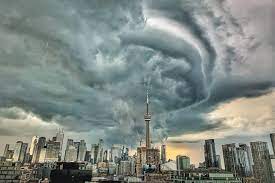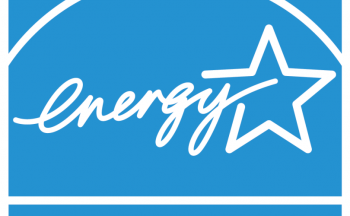 February 2023
February 2023
Climate change has and continues to occur. In recent years we’ve experienced increased rainfall and prolonged heat waves.
Canada’s average temperature increased an estimated 1.7 C from 1948 to 2016. Temperatures continue to rise and rainfall continues to increase. The number of days in southern Canada where temperatures exceed 30 C is expected to be four times more frequent by 2050.
 Recent flooding events include Toronto’s 2018 flash flood when 100 millimetres of rain (nearly 4 inches) fell in under two hours, and a 2014 Burlington storm where 192 millimetres of rain (more than 7 inches) fell in under eight hours. Cars parked in parking garages were destroyed and people trapped in elevators.
Recent flooding events include Toronto’s 2018 flash flood when 100 millimetres of rain (nearly 4 inches) fell in under two hours, and a 2014 Burlington storm where 192 millimetres of rain (more than 7 inches) fell in under eight hours. Cars parked in parking garages were destroyed and people trapped in elevators.
Since we are unable to control weather, we must adapt.
High-rise communities are generally protected against heat waves by air conditioning but this comes at a cost. During these periods the amount of electricity used, and its cost, continues to increase. We create more air pollution.
Flooding history for an area is unlikely to be a reliable indicator of future flooding which has and continues to increase. Newer flood maps are expected to show where water surges are more likely to occur. Understanding these likely flows may help identify communities more likely to experience sewer backups and flooded lower levels. Microbursts, short downpours of heavy rain, make any area more susceptible to flooding.
 Recent events are likely to be minor compared to what can be expected. Over a 25-year period ending in 2008 property and casualty insurance payouts ranged from $250 to $450 million annually. Over the next ten years annual losses more than doubled. Most were the result of flooding including internal water damage from preventable leaks.
Recent events are likely to be minor compared to what can be expected. Over a 25-year period ending in 2008 property and casualty insurance payouts ranged from $250 to $450 million annually. Over the next ten years annual losses more than doubled. Most were the result of flooding including internal water damage from preventable leaks.
Effects of increased rainfall include faster growth of mould, mechanical systems failing and health hazards. Rodents, ants and beetles thrive after flooding. Higher humidity is desirable for midges which are a persistent annoyance in downtown high-rise towers near Lake Ontario. Diseases such as West Nile virus may expand to Toronto as temperatures warm.
Most high-rise communities will adapt. Today’s small pest control budget may grow by a factor of ten as pest and virus control efforts increase. Preventative maintenance budgets will grow to ensure currently manageable concerns don’t become unmanageable.
Mitigation against water includes anything that prevents it from leaking in or entering a building. Sensors detecting water can prevent elevators from proceeding to flooded levels. Leak detection systems can send notification to management when water is detected allowing them to take action sooner and prevent damage. Some systems will automatically close water valves when water is detected. Pavement and landscaping can be angled to direct water away from a building. Other measures include clearing drains more frequently, ensuring roofs and windows remain in good condition, and installation of moisture sensors where water can pool in hidden areas of the building.
Reflective and green roofing can redirect sun and heat from a building rather than having it absorbed.
Backup power generation, if not located on lower levels, allow a building to remain inhabited when flooding occurs.
 More extreme weather is on the way. The choice is one of preparing now for floods and extreme heat, or suffering later while paying dramatically more for maintenance and insurance.
More extreme weather is on the way. The choice is one of preparing now for floods and extreme heat, or suffering later while paying dramatically more for maintenance and insurance.







